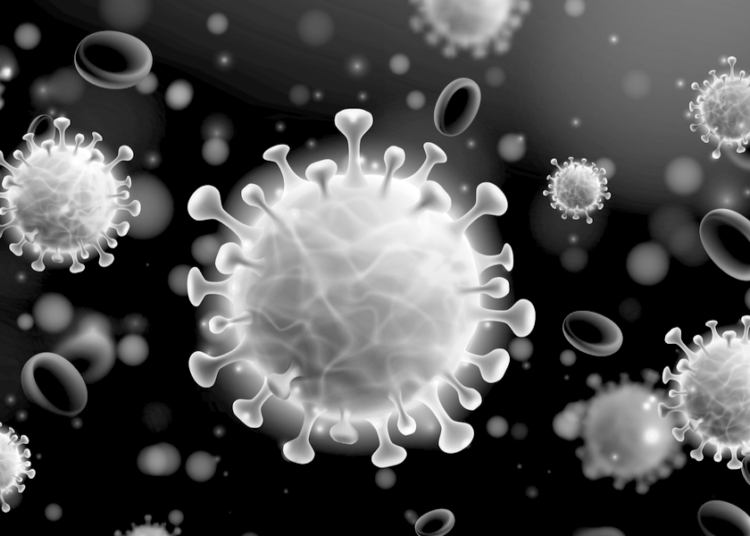THESE must be sad days in the Bloomberg School of Public Health at Johns Hopkins University, home of the daily pile of public-health-related junk emanating from this establishment in the shape of the Global Health Now (GHN) newsletter. One imagines black armbands as the coffin is raised on to the shoulders of the pallbearers, ready for its final journey to the crematorium.
What’s in the coffin? The hopes and ambitions of so many public health and other researchers in the field of covid research for whom the rails on which the covid gravy train ran extended, seemingly, for ever. In the wake of the Trump reforms of the US health system and streamlining of health research funding GHN headlined on March 26 with ‘COVID-19 Research Canceled’.
In an article which conveys much weeping, wailing and gnashing of teeth, GHN reports how both the National Institute for Health (NIH) and the Centers for Disease Control and Prevention (CDC) ‘have begun widespread terminations of grants related to COVID-19 research and public health outreach, saying ‘the grant funds are no longer necessary’.
In what is described by Nature as a ‘crackdown’, the NIH said that covid research funds were for a limited purpose which was to ‘ameliorate the effects of the pandemic’. Providing even more reasons to be cheerful, the Nature article also says climate change studies and studies on South Africa are to be ‘terminated’. Studies related to covid were worth $850million, making up 2 per cent of the NIH budget. Simultaneously, the CDC will end $11.4billion funding in ‘pandemic response’ funding.
Of course, Nature describes the move as ‘shortsighted’ and reiterates the ‘covid killed 7million worldwide’ trope. That figure takes no account of ‘with’ versus ‘of’ covid, the inestimable deaths caused by lockdown and health service restrictions and, of course, the widespread deaths due to vaccine harms. They clearly believe, if they keep repeating the 7million figure, it will become true. Sadly, many people already believe it is.
One virologist, Jason McLellan at the University of Texas Austin, says the cuts are ‘unprecedented’ (nice to see that word making a comeback) and ‘dangerous for future pandemic preparedness’. Therein speaks a man whose funding has just been cut; he was leading one of the projects which was cancelled.
The academic journal Science reports that programmes developing antiviral drugs and two centres of excellence studying virus transmission and immune response have been cut. These are legitimate areas for ongoing research but so much for trying to jump on the covid bandwagon. That backfired. Their funding streams mentioned covid and that is the reason they have been cut. This US administration means business when it decides to stop covid-related funding and researchers will have to get used to it.
Science also reports a funding stream to ‘develop improved COVID-19 vaccines and to address long COVID’ has been cut. Strange to hear talk of ‘improved’ vaccines when we were all given the impression that they were both 100 per cent effective and 100 per cent safe. How do you improve what is already perfect? As for long covid, we are regularly at pains to point out in these pages that it probably does not exist.
So much public-health-related good sense seems to have broken out in the wake of Trump that the communications chief of the Department of Health and Human Services Andrew Nixon was able to call covid a ‘non-existent pandemic that Americans moved on from years ago’. Wonderful stuff and how we long for someone in the UK Department of Health and Social Care who would even dare to utter such truth.
After the main article, GHN inserts a single line, a kind of ‘see what you’re missing’ whimper from a jilted lover. The line reads ‘Vaccination cuts the risk of long COVID 27 per cent, review suggests’ and the source is another old favourite of ours, the newsletter CIDRAP of the Center for Infectious Disease Research & Policy at the University of Minnesota. Note the word ‘suggests’.
The report is a review of nine papers relevant to ‘post-covid condition’ which, like long covid, is another poorly defined condition. Admittedly, there are some very high absolute risk reductions (ARR) for three of the studies. But, it should be noted, these are all retrospective studies and not ‘gold standard’ randomised controlled trials.
The samples are likely to be biased and one well known bias in such studies in the ‘healthy vaccinee effect’ whereby already healthy people are more likely to get vaccinated. This is not taken into consideration and it is also apparent in the study with the highest ARR that the post-covid symptoms were measured a long time (12 and 18 months) after vaccination. If the unvaccinated were already unhealthy, their health is likely to have deteriorated in that time. The other studies use much shorter (one to three months) follow-ups.
Three of the studies have ARRs around 5 per cent, one has an ARR less that 1 per cent and one has a negative ARR meaning that those in the vaccinated group had more post-covid symptoms than the unvaccinated. As post-covid condition covers a multitude of symptoms and none of the studies used the same outcomes, it is not methodologically correct to produce a combined outcome for the overall ARR of the vaccine. It is simply not possible to claim a suggested risk reduction, however calculated, of 27 per cent.
Perhaps we will see fewer of the kinds of exaggerated claims regularly made in CIDRAP once the covid gravy train finally grinds to a halt.











